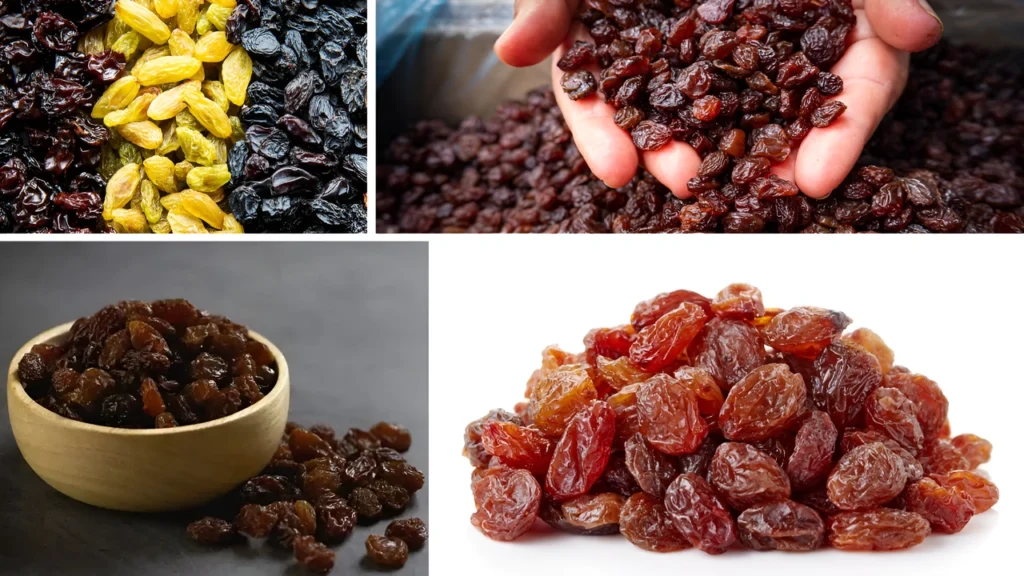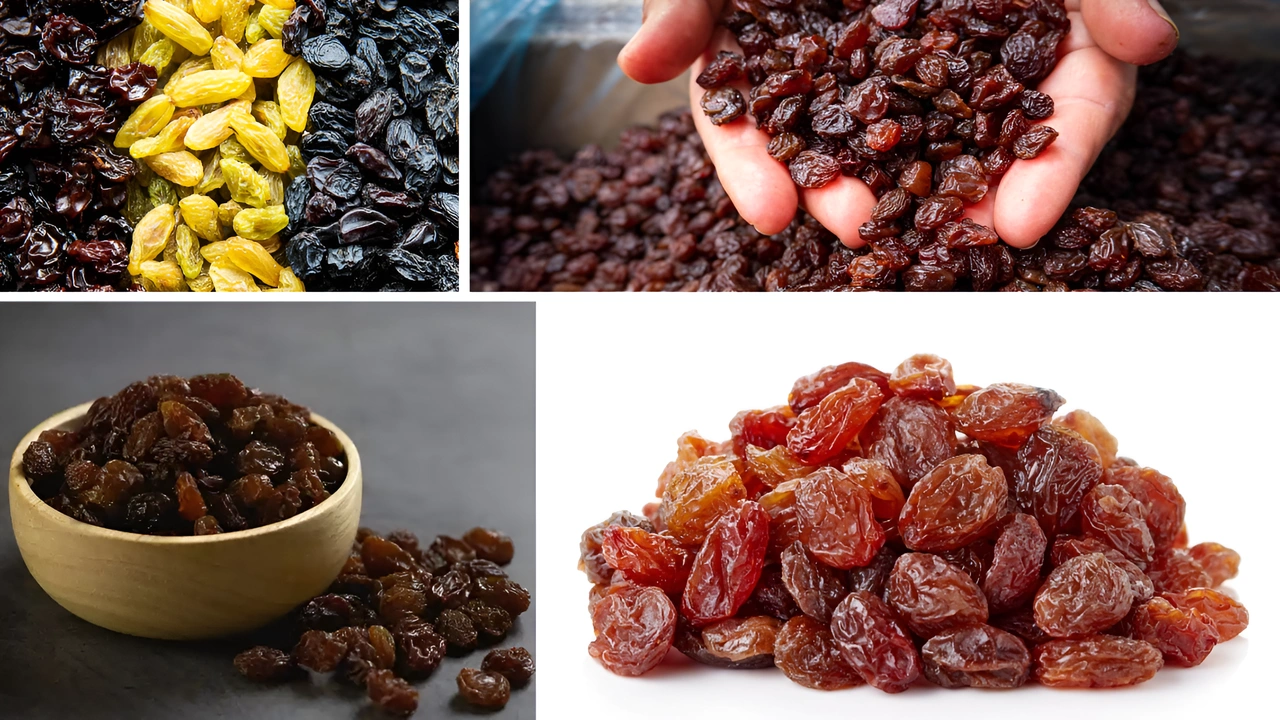Join on WhatsApp
Get the latest updates directly on WhatsApp – motivation, news & more!
As the demand for dried fruits surges across the globe, raisins production has become a booming sector within the agricultural industry. In 2025, the race to become the global leader in raisins production has intensified, with a few key players dominating international markets. Raisins, cherished for their long shelf life, natural sweetness, and nutritional benefits, are now more than just a pantry staple — they are a vital export product and economic driver for many countries. This article explores in detail which country tops the list in 2025 as the global leader in raisins production, and the key factors that influence this dynamic market.

The Economic Impact of Global Leader in Raisins Production 2025
The country that emerges as the global leader in raisins production in 2025 does not just hold a title — it reaps massive economic benefits. Raisins are a high-value product, and their production supports thousands of jobs from farming to packaging and global logistics. Being the top producer provides immense leverage in international trade agreements, price setting, and supply chain control. This position also brings influence in food safety regulations and innovation in drying and preservation technologies.
Key Factors Behind Topping the Global Raisins Production List
To become the global leader in raisins production in 2025, a country must have a combination of ideal climate, advanced agricultural technology, government support, and a skilled workforce. Raisins are typically produced by drying grapes in the sun or mechanically, and both methods require precision and care to ensure consistent quality. Top-producing countries invest heavily in irrigation, pest control, and drying infrastructure. Moreover, they ensure sustainable practices to meet increasing global demands and evolving consumer preferences toward natural and organic products.
Top Contenders in the Global Leader in Raisins Production 2025
In 2025, the race is tight, but a few countries have emerged as top contenders. The following table outlines the estimated production levels of the leading countries and their percentage share of the global raisins market.
Table: Global Leader in Raisins Production 2025 – Top Producing Countries
| Rank | Country | Estimated Raisins Production (Metric Tons) | Global Market Share (%) |
|---|---|---|---|
| 1 | United States | 310,000 | 26.5% |
| 2 | Turkey | 285,000 | 24.3% |
| 3 | Iran | 170,000 | 14.6% |
| 4 | China | 160,000 | 13.7% |
| 5 | India | 100,000 | 8.5% |
| 6 | Chile | 65,000 | 5.5% |
| 7 | South Africa | 50,000 | 4.3% |
United States: The Global Leader in Raisins Production 2025
In 2025, the United States stands out as the global leader in raisins production, primarily due to the fertile agricultural land of California’s Central Valley. This region provides an optimal mix of sunlight, soil, and water needed for high-quality grape cultivation. American farmers have adopted innovative drying systems that minimize waste and maximize efficiency. Furthermore, USDA support and strong export policies have helped maintain the U.S.’s lead in the raisins production sector.
Turkey: A Strong Challenger in the Global Raisins Market
Though the United States leads in 2025, Turkey remains a close second in the global leader in raisins production race. Known for its seedless sultana raisins, Turkey has long held a reputation for quality and volume. The country benefits from centuries-old farming traditions combined with modern advancements. Turkish raisins are particularly popular in Europe and the Middle East, and aggressive export policies have enabled it to maintain a robust position in the global market.
Iran and China: Rising Influence in Raisins Production 2025
Iran and China continue to gain ground in the global leader in raisins production 2025 contest. Iran’s dry climate is ideal for sun-dried raisins, which are exported widely across Asia and Europe. Despite economic sanctions, local producers have managed to sustain growth through regional trade and a focus on organic and sulfite-free raisins.
China, on the other hand, has scaled its production through government-backed agricultural zones in Xinjiang, where large-scale grape farms and industrial drying facilities are growing rapidly. Its domestic demand is also on the rise, contributing to an internal market that supports continual investment.
India’s Growing Role in Global Raisins Production in 2025
India is steadily climbing the ladder in the global leader in raisins production 2025 rankings. Although traditionally focused on table grapes, India has increasingly diverted grape production toward dried fruit to meet both local consumption and export needs. States like Maharashtra are at the forefront, where advanced drip irrigation and solar drying systems are making a significant impact. India’s potential lies in its vast agricultural base and the sheer size of its domestic market.
Sustainability and Innovation in the Global Leader in Raisins Production 2025
One critical factor influencing the global leader in raisins production 2025 is the emphasis on sustainability. Consumers worldwide are demanding organic, non-GMO, and ethically sourced dried fruits. Countries leading the market are investing in solar-powered dryers, water-efficient farming, and zero-waste processing plants.
Innovations such as AI-driven irrigation systems, blockchain for supply chain transparency, and biodegradable packaging also set the leaders apart. These sustainable practices not only protect the environment but also align with global trade policies and certifications that favor green exporters.
Export Markets and Trade Dynamics in 2025
Being the global leader in raisins production also means having strong international trade partnerships. In 2025, top producing countries are leveraging trade agreements to secure access to lucrative markets in Europe, North America, and Asia. The U.S. and Turkey, for instance, maintain robust export strategies, aided by free trade zones and favorable tariffs.
Emerging producers like India and China are also negotiating trade deals to expand their raisins footprint globally. Currency stability, quality certifications, and logistics infrastructure are all part of the strategic puzzle in dominating the raisins export game.
Challenges Faced by Global Leaders in Raisins Production 2025
Despite the rewards, being the global leader in raisins production 2025 comes with its own set of challenges. Climate change is a growing concern, with unpredictable weather patterns affecting grape yields. Labor shortages and rising costs of production inputs also impact profit margins. Furthermore, geopolitical instability, such as trade wars or regional conflicts, can disrupt supply chains.
To retain leadership, top-producing nations are focusing on climate-resilient crop varieties, mechanized farming, and partnerships with international development agencies to stabilize the industry.
Future Outlook for Global Raisins Production Post-2025
Looking beyond 2025, the competition to remain the global leader in raisins production will become more intense. Technological innovations, trade diversification, and climate resilience will determine the future winners. Countries that invest in automation, sustainable agriculture, and international branding will likely dominate. Moreover, the diversification of raisin-based products — such as energy bars, baked goods, and health snacks — will increase the demand and create new growth opportunities.
Conclusion: Who Truly Tops the List as the Global Leader in Raisins Production 2025?
In conclusion, the race to be the global leader in raisins production 2025 reflects much more than just agricultural capability. It reveals how innovation, sustainability, trade policy, and market demand intersect in the modern global economy. While the United States claims the top spot in 2025, close competition from Turkey, Iran, and China signals a dynamic future for the industry. These countries are not only meeting the current global demand for raisins but are also shaping how the world consumes dried fruit in the years to come. As global trends evolve and new technologies emerge, the title of the global leader in raisins production may continue to shift — but for now, the U.S. leads the list with strength, strategy, and scale.


